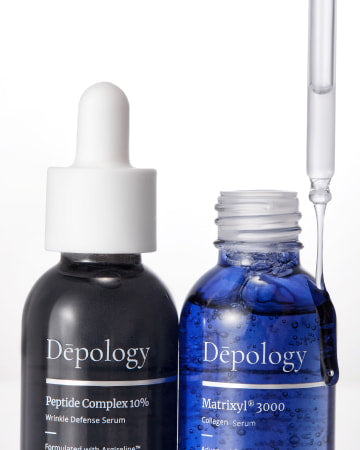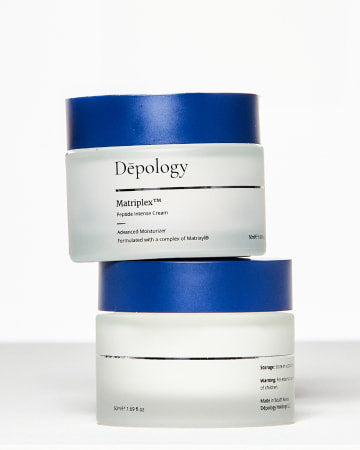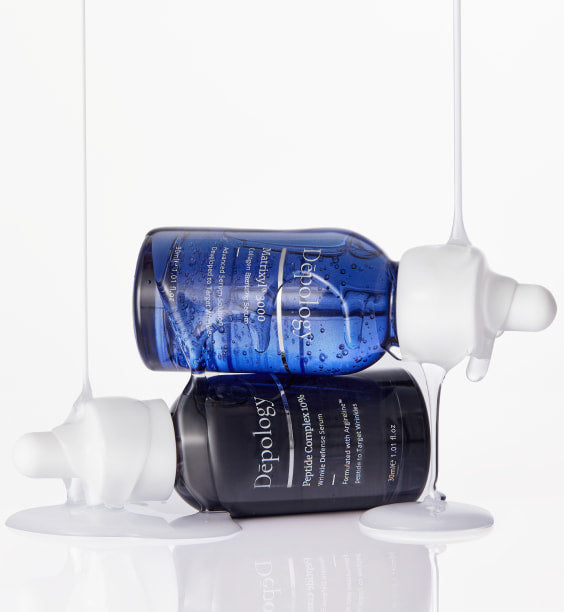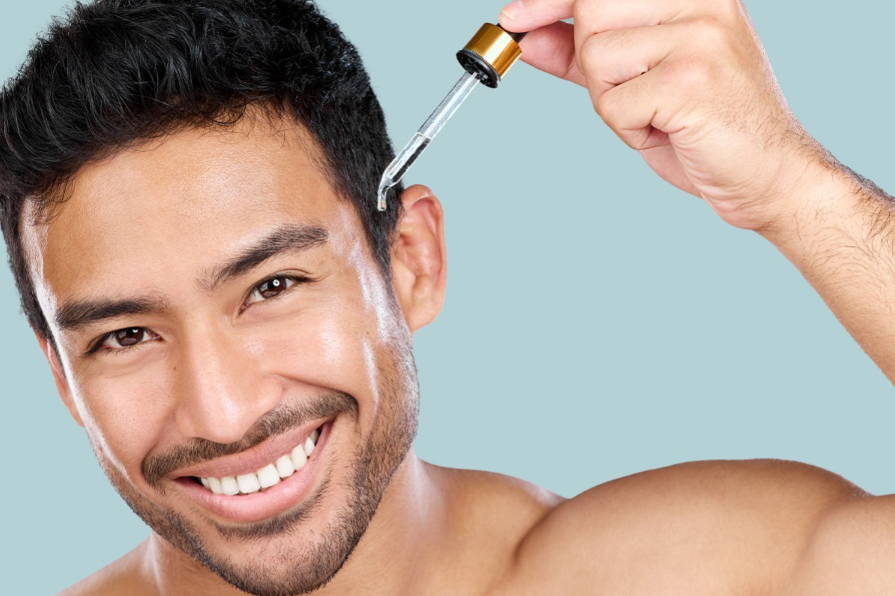
What is Sallow Skin? - Causes, Meaning, and Tips
Embracing a radiant complexion often begins with the right skincare routine tailored to address specific concerns, and one common challenge many face is sallow skin. If you find your complexion lacking its natural vibrancy, fear not as we unveil the secrets to revitalizing sallow skin. From hydration and nutrition to targeted products and expert tips, we hope you’ll discover the transformative power of a well-structured routine in bringing back life to your skin.
What does sallow skin mean?
Sallow skin refers to a yellowish or pale complexion, often indicating a lack of vitality, poor health, or an underlying medical condition. The term is commonly used to describe skin that lacks the healthy rosy or vibrant color associated with good circulation and overall well-being.
What is sallow-faced?
"Sallow-faced" is an expression used to describe an individual whose facial complexion appears yellowish, pale, or lacking in healthy color. The term "sallow" specifically refers to a sickly or unhealthy hue in the skin, often associated with conditions such as poor circulation, anemia, liver problems, or dehydration. The use of this term is typically subjective and observational, noting a certain pallor or dullness in the person's facial complexion.
What are sallow cheeks?
"Sallow cheeks" refer to the condition where the skin on the cheeks appears yellowish, or pale in particular. Sallow cheeks can be indicative of various factors similar to that of “sallow face.” When someone has sallow cheeks, this can affect the overall appearance of the face, making the cheeks look dull or lacking in vitality.
What makes your skin look sallow?
There are several factors that can contribute to the appearance of sallow skin. Dr. Joshua Zeichner, a board-certified dermatologist at Mount Sinai Hospital in New York, expresses that "sallow skin can be caused by a variety of factors, including sun damage, dehydration, smoking, poor diet, and lack of sleep," to name a few. Here are some of the common causes of sallow skin in greater detail:
- Poor circulation: Inadequate blood flow to the skin can result in a pale or yellowish appearance. Poor circulation may be due to various reasons, including cardiovascular issues or lifestyle factors.
- Anemia: Anemia occurs when there's a deficiency of red blood cells or hemoglobin in the blood. This can lead to reduced oxygen delivery to the skin, causing it to appear pale or sallow.
- Liver problems: Certain liver conditions, such as hepatitis or cirrhosis, can affect the skin's color and contribute to a sallow appearance. Jaundice, a yellowing of the skin and eyes, is a common symptom of liver dysfunction.
- Dehydration: Inadequate hydration can make the skin look dull and sallow. Proper hydration is essential for maintaining skin health and a vibrant complexion.
- Smoking: Tobacco use has detrimental effects on the skin, leading to reduced blood flow and exposure to harmful chemicals. Smoking can contribute to a sallow complexion and premature aging.
- Sun damage: Excessive sun exposure can cause skin damage and contribute to a dull and uneven complexion. UV rays can accelerate aging and affect the skin's natural radiance.
- Lack of sleep: Chronic sleep deprivation can negatively impact skin health and appearance, leading to a tired and sallow complexion.
- Nutritional deficiencies: Inadequate intake of certain vitamins and minerals, such as vitamin B12, iron, and folic acid, can affect skin health and contribute to a sallow skin tone.
- Age: As people age, there can be a natural decrease in collagen and elastin production, leading to changes in skin texture and color. Older individuals may experience a loss of the rosy glow associated with youth. Genetics, ethnicity, and individual variations also play a role in skin tone.
How can I make my skin less sallow?
Improving a sallow complexion involves addressing underlying causes and adopting healthy habits for your skin. Here are some tips to help make your skin appear less sallow:
- Stay Hydrated: Proper hydration is crucial for skin health. Drink an adequate amount of water throughout the day to keep your skin well-hydrated, which can contribute to a more vibrant complexion.
- Balanced Diet: Ensure you have a well-balanced diet rich in fruits, vegetables, and whole foods. Be sure to include foods high in vitamins and minerals, such as vitamin C, vitamin A, and antioxidants, to promote skin health.
- Protect Your Skin from the Sun: Use sunscreen with at least SPF 30 to protect your skin from harmful UV rays.
- Quit Smoking: If you smoke, consider quitting. Smoking has detrimental effects on skin health, including reduced blood flow and premature aging.
- Regular Exercise: Exercise promotes good circulation, which is essential for healthy-looking skin. Aim for regular physical activity to improve blood flow and oxygenation.
- Manage Stress: Chronic stress can negatively impact your skin. Practice stress-reducing activities such as meditation, deep breathing, or yoga to promote overall well-being.
- Use Gentle Skincare Products: Choose skincare products that are suitable for your skin type and free from harsh chemicals and fragrances. Avoid products that may cause irritation or dryness.
Skincare Products For Sallow Skin
When experiencing sallow skin symptoms, your focus should always be on ingredients that are specifically meant to treat these types of skin conditions. “Topical products that contain ingredients like vitamin C, niacinamide, and retinoids can help to brighten and improve the appearance of sallow skin,” says Dr. Sejal Shah, a board-certified dermatologist based in New York City.
Power C Antioxidant Radiance Boosting Serum
Designed to be applied twice daily in your AM and PM routine, our Radiance Boosting Serum is nourishing and formulated to firm, target dark or aging spots, and most importantly, brighten skin tone. Not only is 10% vitamin C featured as the primary active ingredient in this formulation, a dermatologist-favorite, but it works alongside other powerful antioxidants such as ferulic acid and goji berry extract.
To incorporate into your routine, apply the serum to the designated area affected by sallow skin after cleansing and if preferable, toning the skin. This serum also works well in conjunction with our N.A.T. Serum, which features niacinamide as an active ingredient in targeting dark spots.
If your sallow skin persists or is accompanied by other symptoms, consider consulting with a dermatologist or healthcare professional. They can help identify any underlying health issues and provide personalized recommendations.
Conclusion
In the journey toward luminous skin, your commitment to a thoughtful skincare routine as well as discovering the source of what is causing sallow skin is the key to unlocking lasting radiance. Be sure to embrace the nourishing power of hydration, the revitalizing potential of antioxidants, and the transformative capabilities of targeted skincare products in your daily regimen. Your skin is a reflection of your overall well-being, and with the right care, you can restore its natural vibrancy from the comfort of your at-home skincare collection.












